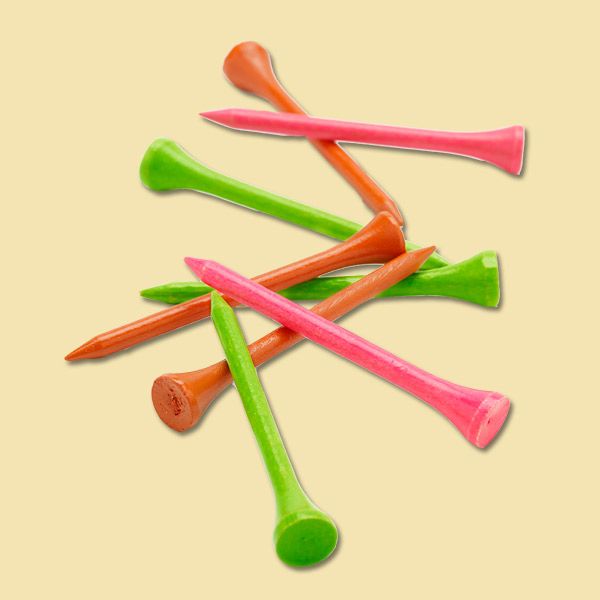
Golf tees aren’t just for the golf course. These small, inexpensive items can be repurposed for various tasks around the home, including home improvement projects, gardening accessories, and crafting. In this article, we’ll explore 10 creative ways to repurpose golf tees.
1. Patch Old Screw Holes

Golf tees can be an easy fix for old screw holes in walls or wooden surfaces. This is particularly useful for filling larger holes or when you need to reposition hardware. Here’s how to use a golf tee to patch an old screw hole:
- Begin by coating a wooden golf tee with carpenter’s glue.
- Gently tap the tee, point-first, into the hole using a hammer.
- Allow the glue to dry completely.
- Once dry, use a flush-cut saw to remove the excess tee, ensuring it’s level with the surrounding surface.
- Apply spackling compound over the cut tee to smooth the surface.
- Sand the area once the compound is dry for a seamless finish.
This technique provides a sturdy base for reinserting screws or can serve as a permanent fix for unwanted holes. It can be especially handy when a previously hung item like a picture frame needs to be moved to a new location, and the old holes need to be filled.
2. Sow Herb Seeds
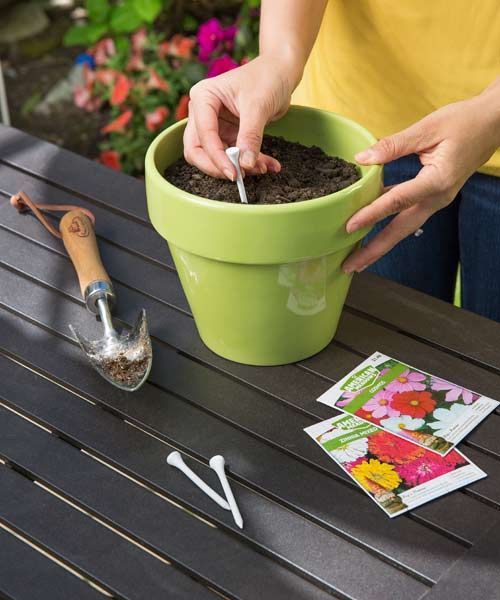
Golf tees can be incredibly useful for planting small herb seeds with precision. Their pointed tip and manageable size make them ideal for creating small furrows and handling tiny seeds. Here’s how:
- Fill pots or seed trays with seed-starting soil.
- Use the tip of a golf tee to create ¼-inch-deep furrow lines in the soil.
- Dampen the point of the tee slightly.
- Use the damp tip to pick up individual seeds, which will cling to it due to surface tension.
- Carefully place the seeds one by one in the furrows you’ve created.
- Gently cover the seeds with a thin layer of soil.
This method allows for precise seed placement, which is especially beneficial for herbs that require specific spacing or those you plan to thin out later. Using golf tees also helps avoid disturbing the surrounding soil too much, ensuring the seeds stay where they are placed.
3. Stake a Picnic Blanket
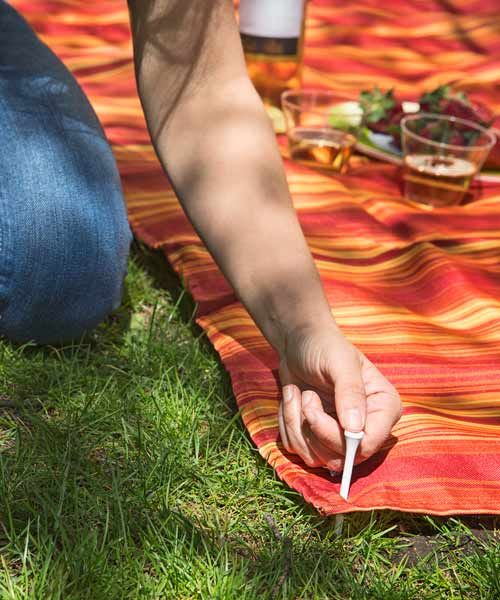
On a breezy day, keeping your picnic blanket in place can be challenging. Pro-length golf tees (4 inches) can serve as makeshift stakes to anchor your blanket securely. Here’s what to do:
- Choose a blanket made of a material that won’t easily tear.
- Cut small slits in each corner of the blanket, about ½ inch from the edge.
- Push a pro-length golf tee through each slit.
- Press the tees firmly into the ground to anchor the blanket.
This simple technique can help you enjoy your outdoor meal without constantly adjusting your blanket. For added stability in particularly windy conditions, consider using additional tees along the sides of the blanket.
4. Use as Spacers

When laying large tiles, pavers, or stepping stones, maintaining consistent spacing is crucial for a professional-looking result. Golf tees work well as spacers during this process. Here’s how to use them:
- Clean and prepare the surface where you’ll be laying the tiles or pavers.
- Place the first tile or paver in position.
- Insert golf tees between the pieces to create even spacing.
- For narrow gaps, place the tees on their heads.
- For wider spacing, use the tees point-side down.
- Continue laying tiles or pavers, using the tees to maintain consistent spacing.
- Once all pieces are in place, remove the tees before grouting or filling the joints.
5. Replace a Lost Cap
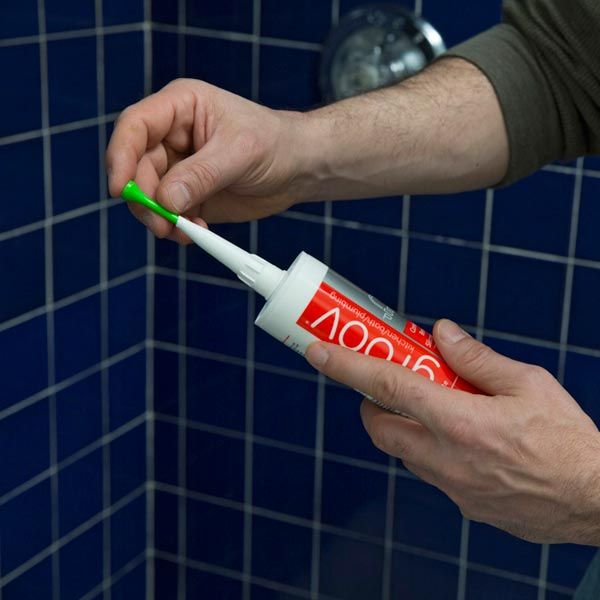
A golf tee can work as a temporary replacement for a lost cap on tubes of adhesive or caulk. This quick fix can help prevent the contents from drying out between uses. Here’s how to use a golf tee as a replacement cap:
- Clean any dried material from the tube’s opening.
- Select a pro-length tee for better reach and seal.
- Insert the pointed end of the tee into the tube’s opening.
- Push the tee in firmly to create a tight seal.
- Store the tube upright to prevent leakage.
Remember that this is a temporary solution, and you should replace the original cap or use a proper sealing method for long-term storage. This stopgap measure can be particularly useful in the middle of a project when you need short-term storage.
6. Keep Your Drill Steady

When drilling into drywall, especially for wall anchors, it’s crucial to maintain a steady hand for accurate placement. A golf tee can help create a starting point for your drill bit, improving precision. Here’s how to use a golf tee to keep your drill steady:
- Mark the spot where you want to drill.
- Place the pointed end of a golf tee against the drywall at the marked spot.
- Gently tap the tee with a hammer to create a small indentation.
- Remove the tee.
- Place your drill bit in the indentation before starting to drill.
This technique is especially helpful when working on walls where precision is key, such as mounting brackets or shelves.
7. Color-Code Bulbs
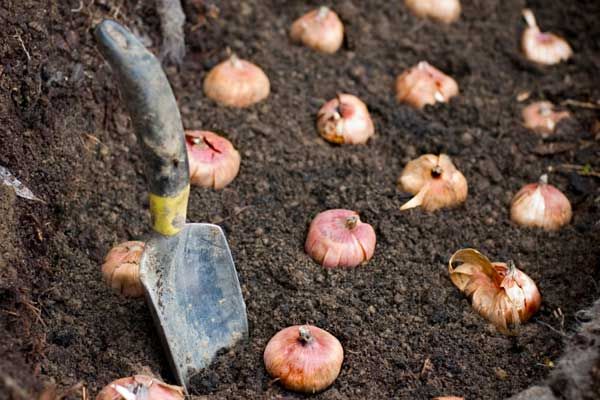
Golf tees can be an excellent tool for mapping out your garden design. By using tees of different colors, you can create a visual representation of your garden plan before planting. Here’s what to do:
- Sketch a rough layout of your garden on paper.
- Assign different colored tees to represent various bulb types or colors.
- Push the tees into the ground according to your plan.
- Adjust the layout as needed before planting.
- Plant your bulbs, replacing each tee with the corresponding bulb.
This method also helps ensure that you plant bulbs at the right depth and spacing, leading to a more organized garden.
8. Give Your Kids DIY Practice
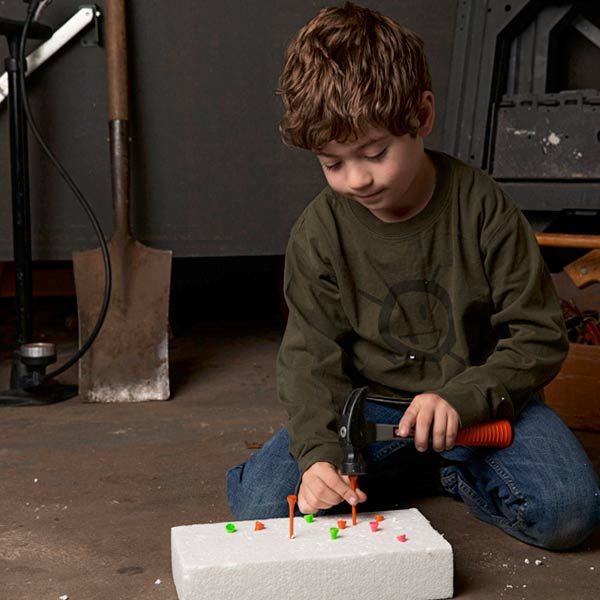
Golf tees can provide a safe and fun way for children to practice basic tool skills. This activity helps develop hand-eye coordination and introduces kids to the concept of using tools. Here’s how to set up this activity:
- Obtain a block of rigid foam, such as floral foam or insulation board.
- Provide children with short golf tees and a toy hammer.
- Demonstrate how to hold the tee and hammer safely.
- Encourage kids to practice hammering the tees into the foam.
- Supervise the activity to ensure safety.
You can also have children create patterns or designs with the tees, or use them to introduce concepts like counting and color recognition. It’s a great way to engage kids in hands-on learning and allow them to develop fine motor skills in a safe environment.
9. Remove Caulk
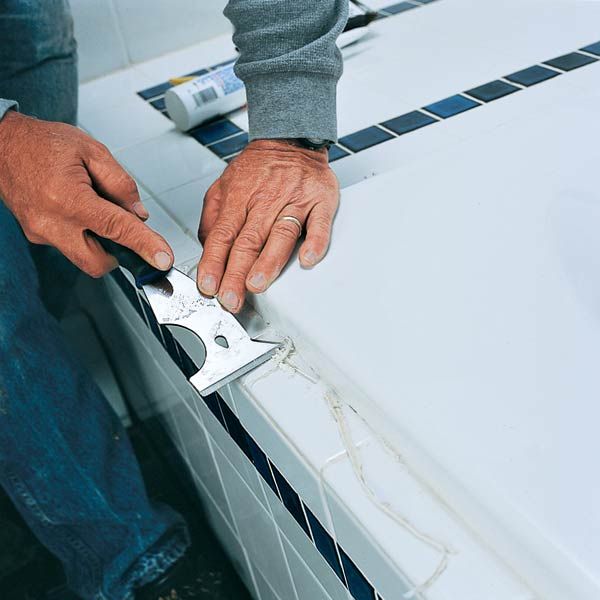
When removing old caulk from around a bathtub or sink, a golf tee can be a useful tool for reaching tight corners and crevices. The pointed end of the tee can help scrape away stubborn bits of caulk that other tools might miss. Here’s how to use a golf tee for caulk removal:
- Use a caulk remover solution to soften the old caulk.
- Remove as much caulk as possible with a putty knife or caulk removal tool.
- Use the pointed end of a golf tee to scrape away the remaining bits of caulk.
- Focus on corners and hard-to-reach areas where caulk may be stuck.
- Clean the area thoroughly before applying new caulk.
Remember to be gentle when using the golf tee to avoid scratching or damaging the surface beneath the caulk.
10. Organize Your Workshop
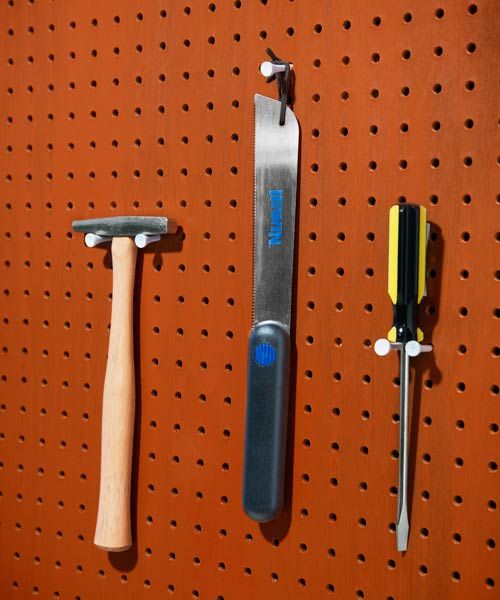
Golf tees can serve as makeshift hooks for organizing small tools in your workshop. This is particularly useful if you have a pegboard with 3/16-inch holes. Follow these steps to use them:
- Clean your pegboard thoroughly.
- Insert golf tees into the pegboard holes.
- Hang lightweight tools such as screwdrivers, pliers, or paintbrushes from the tees.
- Use longer tees for larger tools and shorter tees for smaller items.
- Arrange tools by type or frequency of use for easy access.
This organization method is flexible, allowing you to easily rearrange your tools as needed. However, be mindful of the weight limit for golf tees and use proper pegboard hooks for heavier items.
Our Conclusion
Golf tees are surprisingly versatile tools that can be repurposed for various household tasks. From home repairs to gardening and organization, these small items offer creative solutions to common problems. Next time you come across spare golf tees, consider keeping them handy for these practical uses around your home.
